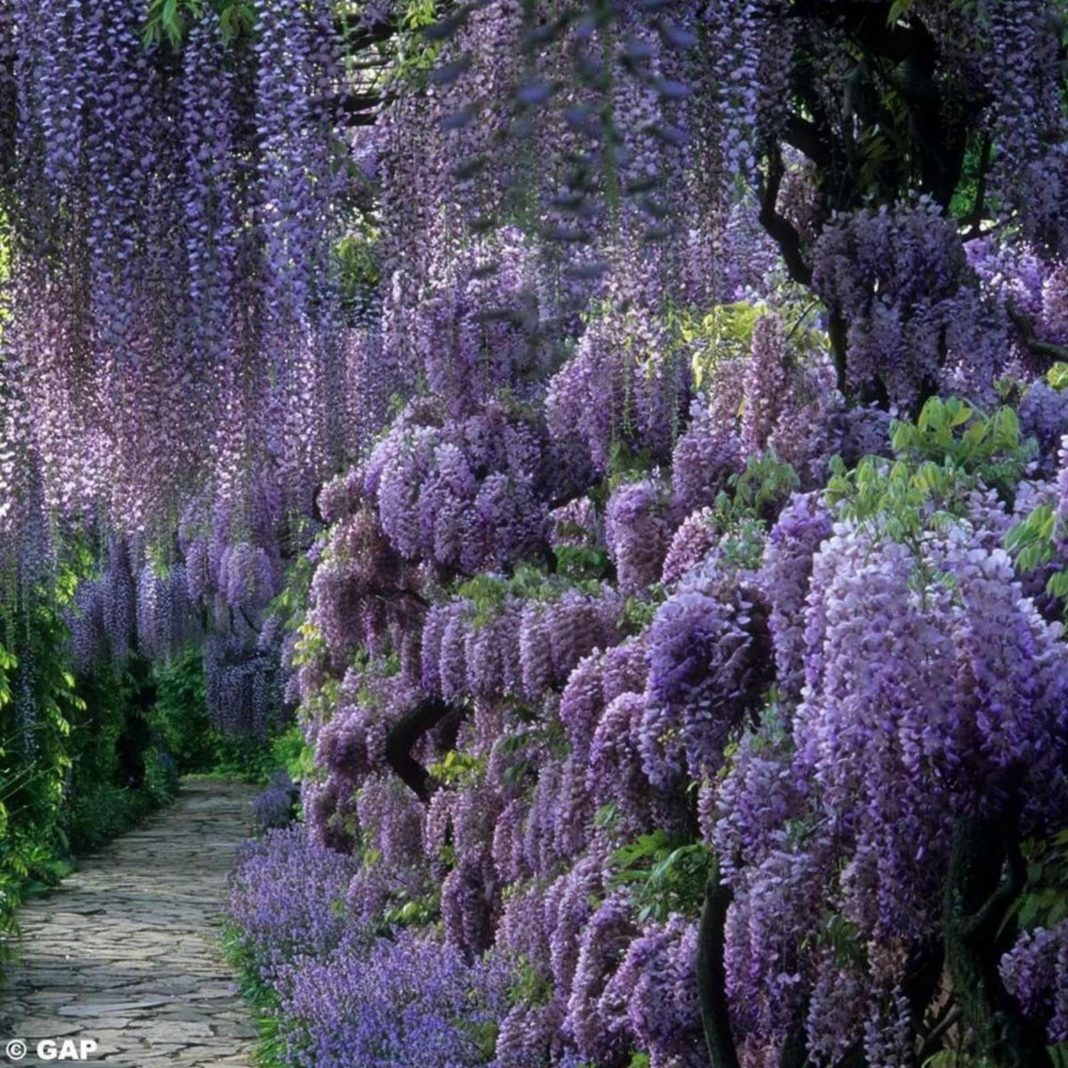Wisteria is a long-lived vine plant with cascades of lilac-blue to purple beautifully fragrant flowers that look spectacular hanging from a pergola or archway in the spring and early summer.
Wisteria blooms vigorously in the spring, producing clusters of flowers on new growth, in turn emerging from spurs, off main shoots.
The vine is a fast and an aggressive grower, often reaching 30+ feet long, and known to grow quite heavy.
They are notorious for taking a long time to flower, so don’t expect any flowers until 2-3 years after planting.
Wisteria vines will work their way into any crook or cranny, so it’s advised not to plant them around your home.
Plant in the spring or autumn, while dormant, in a full sunny position in fertile, moist, well-draining soil.
Choose a site away from other plants, as wisteria grows quickly and can easily overtake its neighbours.
Each spring, apply a layer of compost under the plant and a 2-inch layer of mulch, to retain moisture and control weeds.
Fertilise by adding a couple of handfulls of bone meal into the soil in the spring and add rock phosphate in autumn.
For more flowers cut back the rampant shoots every two weeks during the summer months.
Wisteria can be grown from seed, but grown from seed will often take quite a few years to reach maturity and produce flowers. Therefore, it’s recommended to purchase an established wisteria plant.
Prune wisteria in late winter by removing at least half of the prior year’s growth, leaving just a few buds per stem.
If you want a more formal appearance, also prune in summer after traditional flowering. Prune all this year’s new shoots back to a spur, leaving no more than about about 6 inches of growth.
At the same time the plant can be trained and tied-in, so that there are no loose, trailing shoots.
Plant with caution as all parts of the plant contain substances called lectin and wisterin, toxic to pets, livestock, and humans, causing anything from nausea and diarrhea, to death, if consumed in large amounts.
The substance is especially concentrated in the plant’s seeds and seedpods, so remove the seedpods after the plant has flowered, if pets or children are often nearby.
Wisteria blooms vigorously in the spring, producing clusters of lilac-color flowers on new growth, which in turn emerges from spurs off the main shoots.





